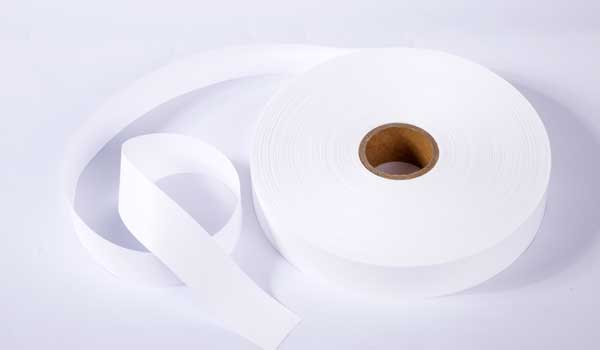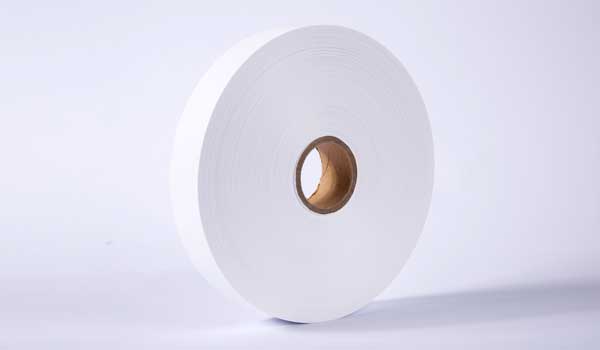HEAT TRANSFER LABELS
Heat transfer clothing labels are easy to apply using a heat press or home iron. They work great on t-shirts, athletic apparel or anywhere a “tagless” application of your logo is desired. If you are unsure if heat transfers will work well with your fabric, consider ordering a sample pack which include heat transfer samples for testing.
Instructions: Set your heat press to 320F or home iron to medium cotton setting. Press firmly for 15 seconds, then allow the label to cool completely before peeling. Let the garment set for 24 hours before washing.

Heat transfer labels
(also known as HEAT SEAL and TAG LESS) are one the most popular labels in the apparel market. From simple camp labels through name labels, swimwear, athletic, dancewear, lingerie, babywear to a brand label, heat transfers have become the “I want it now” product.
There are a variety of heat transfer labels offered by many manufacturers. It may be difficult and confusing to search for the right one. To start the search for right transfer label, you need to know your fabric composition (content). Not all transfers label are the same and work the same. Some require higher heat and more pressure to adhere while others require the garment to be preheated in order to work properly.
Heat transfer labels are very durable and can withstand dozens of wash/dry cycles without fading, cracking or splitting. Any type of design can be made as a heat transfer. No commercial grade equipment is needed for the application process, just a simple household iron will be sufficient for most types. For specialty transfers, high volume orders and faster processing, a commercial heat press is recommended.
What Are Heat Transfer Labels?
Heat transfers are also known as heat press transfers, tag-less, sew free label or iron on labels. It is a process that imprints a design onto an item through the use of heat and pressure. Often the design is printed onto a paper or a synthetic carrier and then applied to the desired item, most commonly textile products that are going to be in direct contact with the skin, such as underwear, swimwear, sportswear & t-shirts.
Heat transfers are designed to last the lifetime of a product and this longevity is often vital when it comes to clothing; if the transfer is not a focal point of the garment then it is likely to contain important information such as brand, size, washing instructions, fabric content and other product details.
How Do You Apply Heat Transfer Labels?
- Heat Transfers Garment tags can be applied using a household iron or commercial heat press.
- The application will vary depending on the fabric composition as well type of the transfer label.
- Always follow the manufacturers applying instructions.
HOUSEHOLD IRON – Using a household iron is very simple and does not require any technical skills. However make sure to test on a swatch or piece of similar fabric before full transfer application on your garment. This way you can avoid any mishaps and errors and you will be knowledgable about the pressure and time involved. Please note that not all heat transfers labels can be applied by household iron. Please contact your transfer manufacturer for specific instructions if you are unsure.
MANUAL HEAT PRESSES – Using manual heat presses are easy to use and suitable for those who print regularly but in smaller quantities. Place the garment and heat transfer label on the press and apply the print by lowering the upper platen until it locks into position. The press gives you some help with applying pressure, but some manual pressure is required. Again, it is always a good idea to do some testing prior to your project to make sure the press and transfer are working properly.
PNEUMATIC HEAT PRESSES -Pneumatic heat presses use a compressor instead of a manual handle or lever. Buttons and digital settings control the pressure, heat and timing of your printing operation. You do not need to use manual power with a pneumatic press. High frequency heat presses are widely used by athletic wear companies and any project with high volume manufacturing.
Investing in a commercial heat press machine will provide a very cost effective and practical method of the application of your tagless transfers. When investing in a heat transfer machine it is vital that you spend your money wisely, ensuring that you get the best machine for your money, one that will produce high-quality transfers at a fast rate.
Three main key components to consider when using commercial heat press are:
- Time = amount of time, in seconds, that heat must be applied to the garment
- Temperature = optimal degree at which transfer will adhere to the garment
- Pressure = amount of downward force needed when applying heat
Here are some key factors when choosing the right heat press:
- Space = How much space do you have in your work area?
- Production = How much/often will you use a heat press?
- Size = What type of garments are you decorating?
- Experience = How much experience do you have working with a heat press?
- Cost = How much do you want to invest in your heat press equipment?
Popular size options for Heat Transfer Labels
When choosing tagless transfers for your clothing brand, there are a number of different factors that need to be considered. One of the most important things to think about is the size of the transfer itself.
Our heat transfer labels are fully customizable to fit your needs. Here are some common sizes of heat transfers according to the type of garment or accessory. Keep in mind, we can make them to fit your needs:
- *T-Shirts, men’s and women’s casual wear – 2” x 2”, 1.5” x 2.5”
- *Dresses – 2.5” x 1”
- *Suits and jackets – 2” x 3”, 3” x 3”
- *Baby Wear – 1.25” x 1.25”
- *Athletic Wear – 1.5” x 2”, 2.25” x 2”
- *Swimsuits – 1.25” x 1.25”, 1” x 2”
- *Lingerie – 1.5” x 1.25”
- *Team uniforms – 2” x 3”
- *Tote Bags – 2” x 4”
One of the questions we often asked is “What is a standard size of the heat transfer label?” or “Do you have a template for transfers?” The answer is that there is no standard size. It’s all up to you to decide what size transfer will work best with your garment, your budget and your logo.
We always encourage designers to fully personalize their brand logo. Don’t use a “cookie cutter pattern” offered by so many printing companies. No matter what clothing label you choose, either a printed label, woven label or tagelss transfer – go with a unique and thought through design. The label and design that you choose plays a vital role in the success of your brand.





